Discover 35 hidden attractions, cool sights, and unusual things to do in Trondheim (Norway). Don't miss out on these must-see attractions: Nidaros Cathedral, Kristiansten Fortress, and Erkebispegården. Also, be sure to include Vår Frue Church in your itinerary.
Below, you can find the list of the most amazing places you should visit in Trondheim (Sør-Trøndelag).
Table of Contents
Nidaros Cathedral
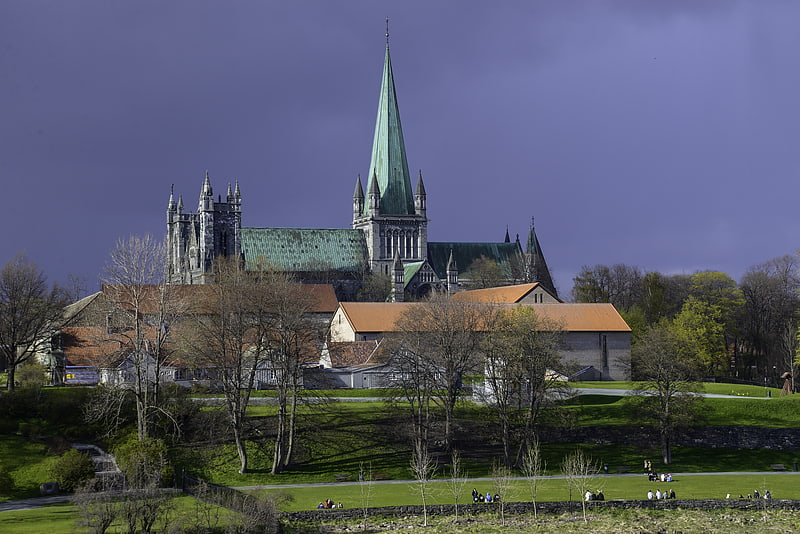
Also known as: Nidarosdomen
Cathedral in Trondheim, Norway. Nidaros Cathedral is a cathedral of the Church of Norway located in the city of Trondheim in Trøndelag county. It is built over the burial site of King Olav II, who became the patron saint of the nation, and is the traditional location for the consecration of new kings of Norway. It was built over a 230-year period, from 1070 to 1300 when it was substantially completed. However additional work, additions and renovations have continued intermittently since then; the most recent changes were completed in 2001. Nidaros was designated as the cathedral for the Diocese of Nidaros in 1152. After experiencing the turmoil and controversies of the Protestant Reformation of the 16th century, it was taken from the Catholic Church by the newly established state Church of Norway in 1537, which adopted the teachings and reforms of Martin Luther, Phillip Melanchthon, and others, becoming an Evangelical Lutheran church. Nidaros is the northernmost medieval cathedral in the world.
The cathedral is the main church for the Nidaros og Vår Frue parish, the seat of the Nidaros domprosti (arch-deanery), and the seat of the Bishop of the Diocese of Nidaros. The Preses of the Church of Norway is also based at this cathedral. The large, stone church seats about 1,850 people and it was historically used as the site of coronation of the kings of Norway.[1]
Address: Bispegata 11, 7012 Trondheim
Kristiansten Fortress
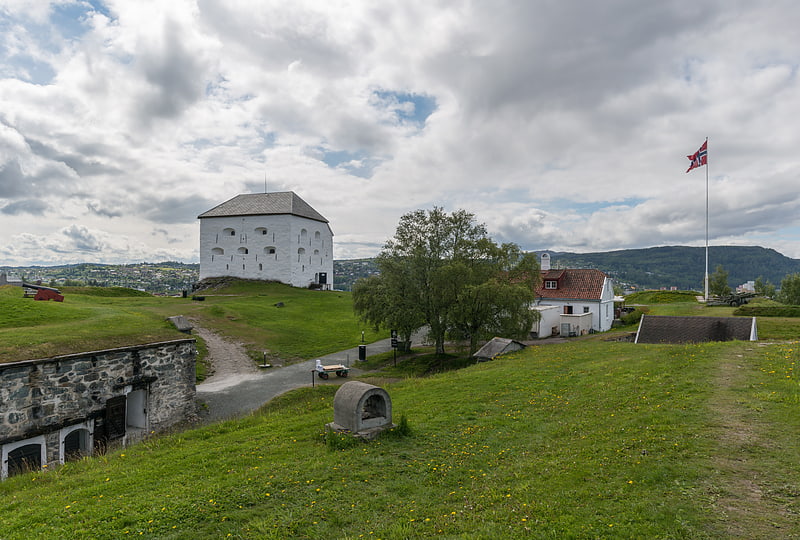
Also known as: Kristiansten festning
Historic fortress with a museum . Kristiansten Fortress is located on a hill east of the city of Trondheim in Trøndelag county, Norway, named after Christian V of Denmark-Norway. It was built after the city fire of Trondheim in 1681 to protect the city against attack from the east. Construction was finished in 1685. It fulfilled its purpose in 1718 when Swedish forces laid siege against Trondheim. The fortress was decommissioned in 1816 by king Charles XIV John.[2]
Address: Kristianstensbakken 60, Trondheim
Erkebispegården
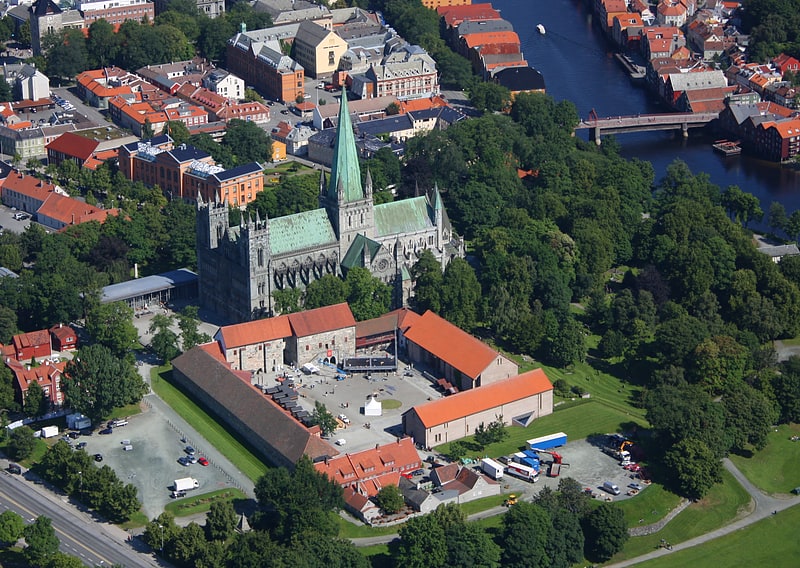
Museum in Trondheim, Norway. The Archbishop's Palace in Trondheim is a castle and palace in the city of Trondheim, located just south of the Nidaros Cathedral. For hundreds of years, the castle was the seat, residence and administrative center of the Archbishop of Nidaros.[3]
Address: Kongsgårdsgata 1B, 7013 Trondheim
Vår Frue Church
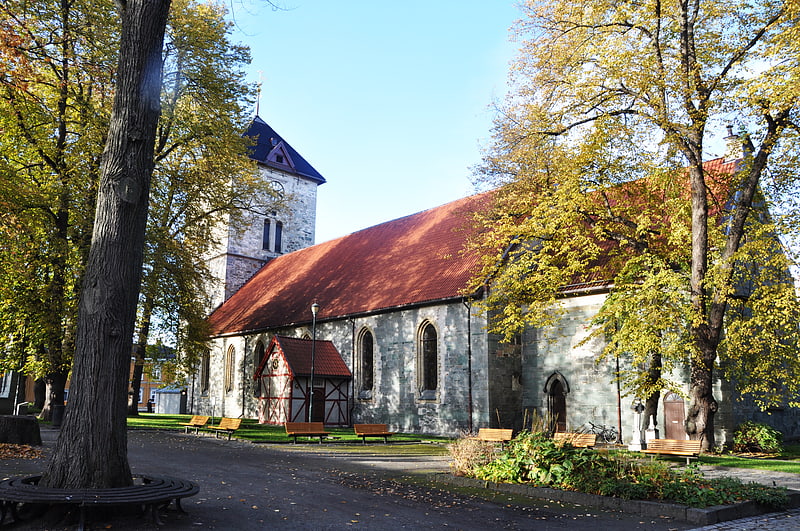
Also known as: Vår Frue kirke
Lutheran church in Trondheim. Vår Frue Church is a medieval parish church of the Church of Norway in Trondheim municipality in Trøndelag county, Norway. It is located in the downtown Midtbyen area of the city of Trondheim, just a few blocks north of the Nidaros Cathedral. It is one of the two churches for the Nidaros og Vår Frue parish which is part of the Nidaros domprosti in the Diocese of Nidaros. The gray, stone church was built in a long church design in the late 1100s using plans drawn up by Bjørn Sigvardsson. The church seats about 540 people.[4]
Old Town Bridge
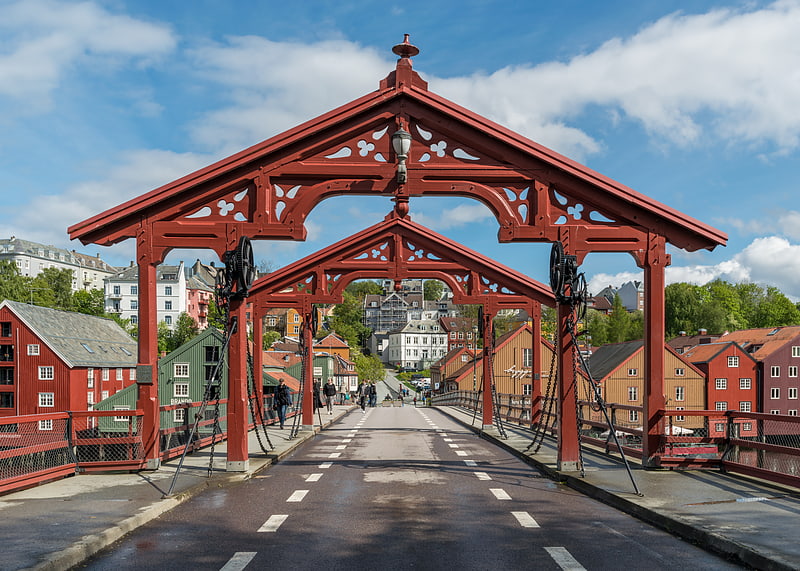
Also known as: Gamle Bybro
Bridge in Trondheim, Norway. Old Town Bridge is located in Trondheim, Trøndelag County, Norway.[5]
Address: Gamle Bybru, 7013 Trondheim
Stiftsgården
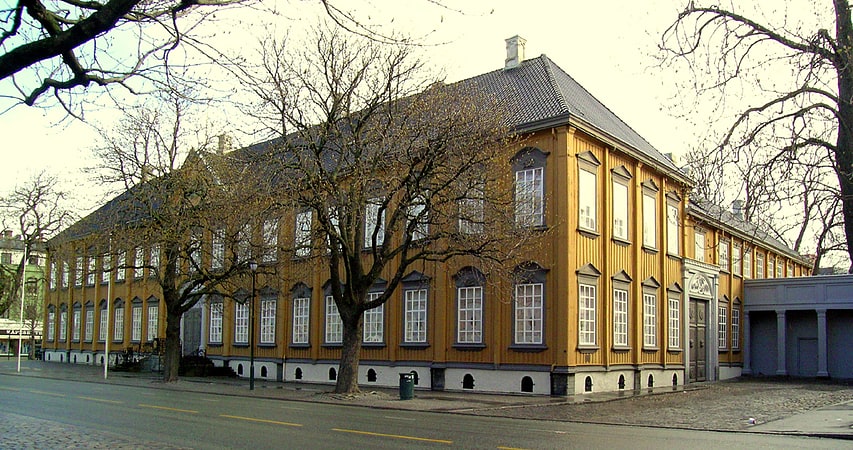
18th-century wooden royal residence. Stiftsgården is the royal residence in Trondheim, Norway. It is centrally situated on the city’s most important thoroughfare, Munkegaten. At 140 rooms constituting 4000 m², it is possibly the largest wooden building in Northern Europe, and it has been used by royalty and their guests since 1800.[6]
Address: Munkegata 23, 7011 Trondheim
Ringve Museum
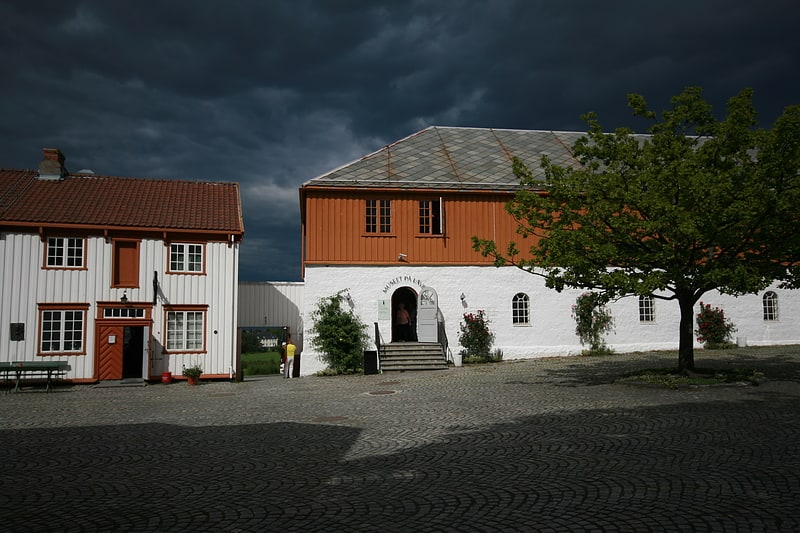
Music history and an array of instruments. Ringve Museum is Norway's national museum for music and musical instruments, with collections from all over the world.[7]
Address: Lade alle 60, 7041 Trondheim
Norwegian National Museum of Justice
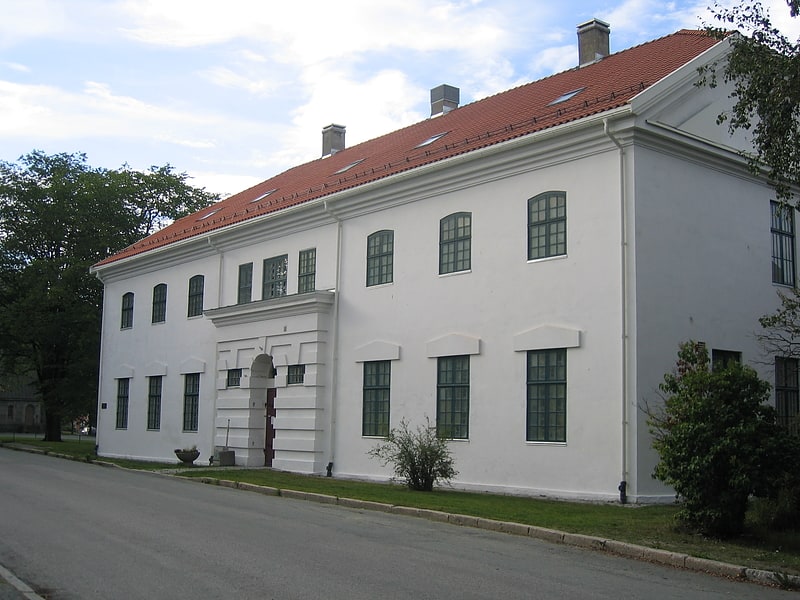
Also known as: Justismuseet
Museum in Trondheim, Norway. The Norwegian National Museum of Justice, Norwegian: 'Justismuseet', until 2016: Norsk Rettsmuseum, is a public museum of penal justice and law enforcement in Trondheim, Norway. From 2001-2017, the director of the museum was ohan Sigfred Helberg. From 2017-2018, the director was Brynja Birgisdottir and since 2019, has been Åshild Karevold. It is housed in a former prison.[8]
Address: Kongens gate 95, 7012 Trondheim
Trondheim Spektrum
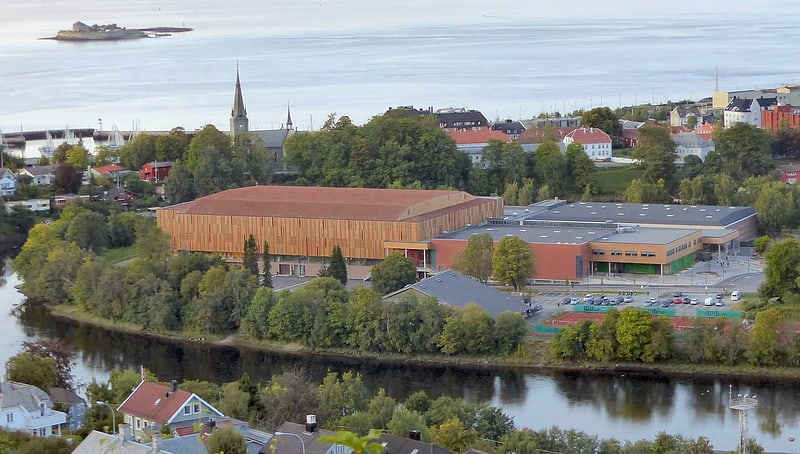
Arena in Trondheim, Norway. Trondheim Spektrum is a multi-purpose indoor arena in Trondheim, Norway. It is located on the peninsula of Øya next to the Nidelven river. It is the home arena for women's handball team Byåsen HE. A new arena was completed in 2019 and replaced the largest multi-use hall in the same location. The eight former halls originally went by the name Nidarøhallen.
Next to the halls is the athletics facility Øya stadion and the Trondhjems Tennis Club (TTK) with four outdoor clay courts and indoor tennis hall.[9]
Olav Tryggvason Statue
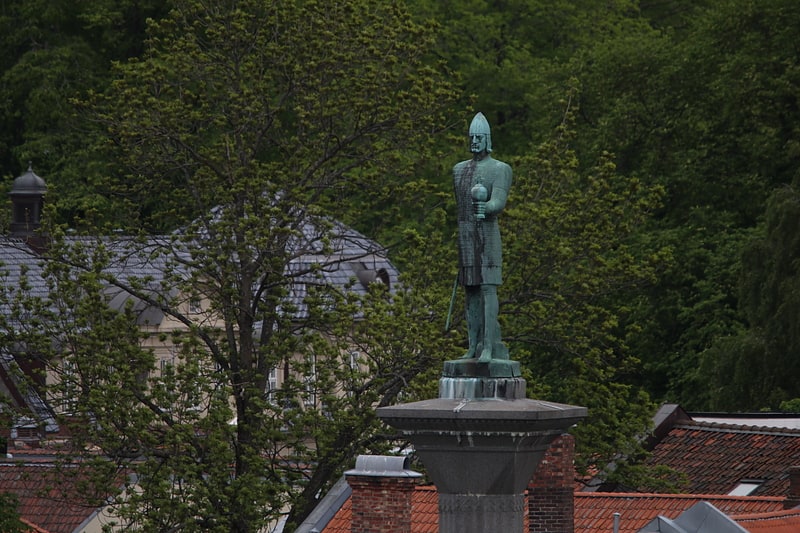
Also known as: Olav Tryggvason-monumentet
Sculpture in Trondheim, Norway. A statue of Olav Tryggvason is located in Trondheim, Norway. Sculpted by sculptor Wilhelm Rasmussen, it honors King Olav Tryggvason who was the city's founder.
The 18-metre high statue is mounted on top of an obelisk. It stands at the center of the city square at the intersection of the two main streets, Munkegata and Kongens gate. The statue was unveiled in 1921. Around the statue base is a cobblestone mosaic, dating from 1930, which forms a gigantic sun dial. The sun dial is calibrated to UTC+1, meaning that the reading is inaccurate by one hour in the summer.[10]
Address: Kongens gate 18, Trondheim
Elgeseter Bridge
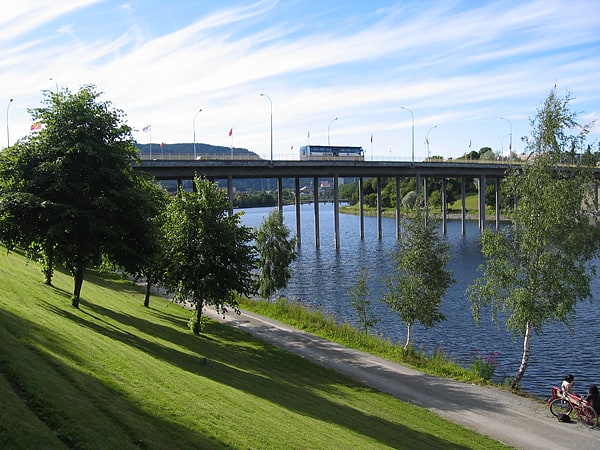
Also known as: Elgeseter bru
Bridge in Trondheim, Norway. Elgeseter Bridge is a bridge in the city and municipality of Trondheim in Trøndelag county, Norway. It is part of the European route E6 highway which passes over the Nidelva river and connects Prinsens street in the Midtbyen area of Trondheim with Elgeseter street in the Elgeseter area of Trondheim in the south. The Trondheim city council decided on 17 March 1949 that the bridge should be built. Elgeseter bridge was opened in 1951 after a construction period of 2 years.[11]
Nidaros Cathedral West Front
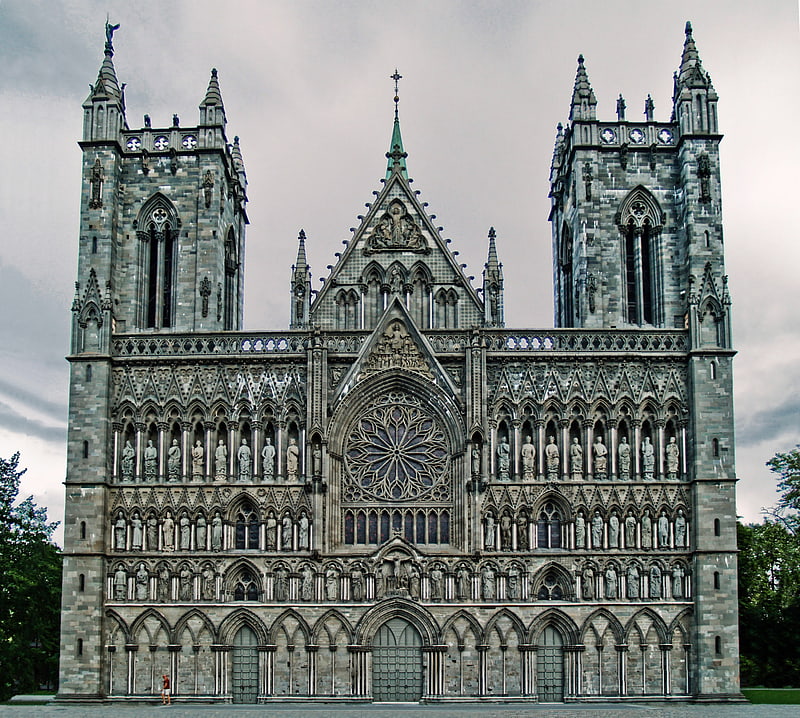
The Nidaros Cathedral West Front, which includes multiple sculptures, was the final portion of the Nidaros Cathedral in Trondheim, Norway that was restored. Nidaros Cathedral is the world's northernmost medieval cathedral and Norway's national sanctuary. The West Front is the cathedral's main facade and one of the most beautiful and ornate portions of the church. The restoration of the West Front took from 1905 to 1983 and was worked on by a large number of sculptors. In 1869, the Nidaros Cathedral Restoration Workshop was founded with the purpose of restoring the Cathedral, and celebrated a 150 years Anniversary in 2019.
A picture of the West Front from 1661 shows extensive deterioration, with only the bottom sections left standing. Only five statues from the Middle Ages have survived. The restoration of the West Front took from 1905 to 1983 and was worked on by a large number of sculptors.
The largest church bell in Norway hangs in the West Front's north tower. Installed in 1964, it weighs 2,400 kg, and people say that it can be heard in Melhus, all of 30 km away, when the wind is in the right direction. The church has three bells. The 'Great Bell' is the oldest and was cast in Hoorn in the Netherlands in 1751.
This part of the church is also the most recent of the original cathedral constructions; archbishop Sigurd Eindrideson laid the cornerstone for the west front in 1248. The construction was not yet complete when the church was burnt in 1328. The original design for the west face is not known, but one can assume that it was never built to those original plans; it is reasonable to assume that a screen front similar to that used elsewhere was planned on the west. Screen fronts were often rectangular and served as a cover to conceal the rest of the church. English cathedrals from the same period, among others Lincoln Cathedral, Wells Cathedral and Salisbury Cathedral, had similar fronts. The west front had three entrances and is flanked by two smaller towers on each side of the façade.[12]
Vitensenteret
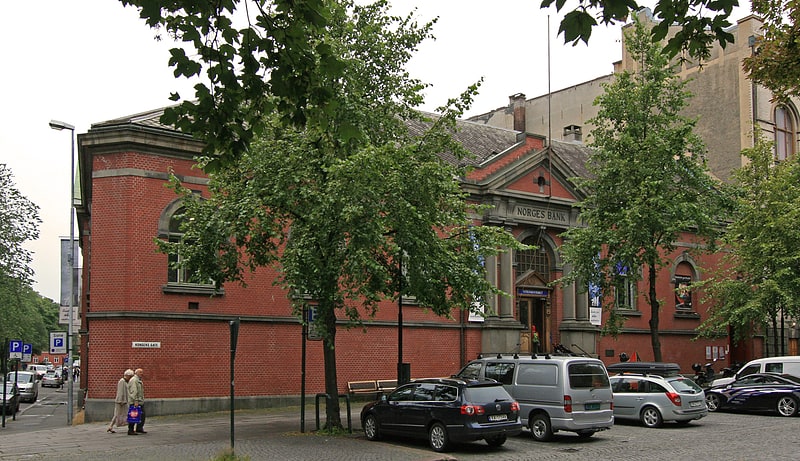
Science museum in Trondheim, Norway. Trondheim Science Centre is located in the Kongens gate area of Trondheim, Norway.[13]
Address: Kongens gate 1, 7011 Trondheim
Lerkendal Stadion
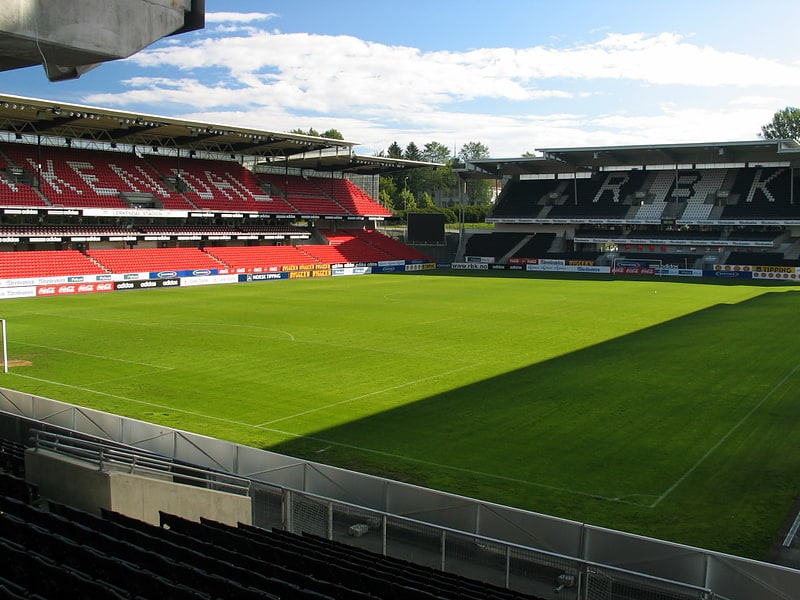
Also known as: Lerkendal stadion
Stadium in Trondheim, Norway. The Lerkendal Stadion is an all-seater football stadium located at Lerkendal in Trondheim, Norway. The home ground of the Eliteserien side Rosenborg BK, it has a capacity for 21,405 spectators, making it the second-largest football stadium in the country.
Lerkendal opened as a multi-purpose stadium on 10 August 1947, as the main football and athletics stadium in Trondheim. Originally the venue was mostly used by the football teams SK Freidig and FK Kvik, and Rosenborg did not become a tenant until 1957. A new grandstand with roof was completed in 1962, and floodlights were installed in 1968. The oldest of the current stands were built in 1996, along with new lighting. Three more grandstands were built between 2000 and 2002, which also saw the removal of the athletics facilities and the sale of the stadium from Trondheim Municipality to Rosenborg. Further expansions plans have been launched, to increase capacity by filling in the corners and possibly by building a retractable roof.
The record attendance of 28,569 dates from the decisive league match against Lillestrøm in 1985. Ten international matches were held at Lerkendal between 1951 and 1990. One domestic cup final has been held at Lerkendal; the Women's Cup Final in 1986.[14]
Address: Klaebuveien 125, 7031 Trondheim
Lade Church

Also known as: Lade kirke
Church in Trondheim, Norway. Lade Church is one of Norway's oldest existing stone churches. It is a parish church of the Church of Norway in Trondheim municipality in Trøndelag county, Norway. It is located in the Lade neighborhood in the city of Trondheim, just southeast of Korsvika and east of Ladehammeren. It is the church for the Lade parish which is part of the Nidaros domprosti in the Diocese of Nidaros. The white, plastered stone church was built in a long church style around the year 1160. The church seats about 160 people.[15]
Address: Jarleveien 44, 7041 Trondheim
Lade Mansion
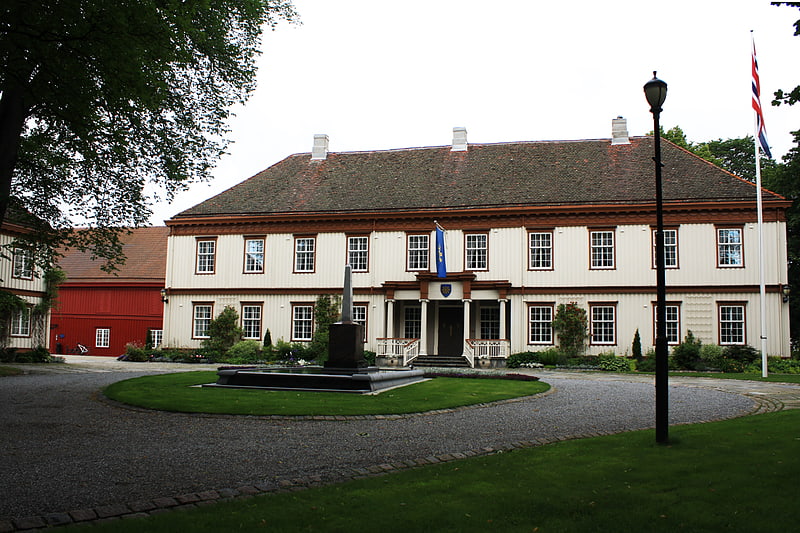
Lade Manor is the a manor house of one of the historic farms of Norway. It is located in the community of Lade outside the city of Trondheim.[16]
Sluppen Bridge

Sluppenbrua is a road bridge across the Nidelva river in Trondheim, Norway. It is 82 meters long, and connects the Norwegian National Road 706 to the areas east of Nidelva.
Originally, Sluppenbrua was built as a railway bridge on the Trondhjem–Støren Line, which was opened in 1864. This bridge was around 200 m long og 30 m tall, made by timber standing on a foundations of rock. This bridge was torn down in 1884 when the new Dovre Line going by Nidareid was opened. The foundations were transferred for free to the Norwegian Public Roads Administration in 1927 with the intent to build a road bridge on the same spot.
The new road bridge was postponed, resulting in the first road bridge to be built being a provisional truss bridge built in wood by order of the German military. This bridge was opened in July 1942. The wood was not waterproofed, which meant that the bridge gradually decayed and had to be closed. A new bridge made of steel was opened in 1954. In 1977 the bridge was equipped with a separate path for pedestrians and cyclists. Today the bridge still stands on the same foundations from 1864.
There are plans for building a new bridge called Nydalsbrua in 2017, being placed just downstream of Sluppenbrua. The new bridge is planned to have four lanes. The plan is to make the new Nydalsbrua exclusively for cars, trucks etc. while Sluppenbrua is intended to be used only by pedestrians and cyclists.[17]
Byneset Church
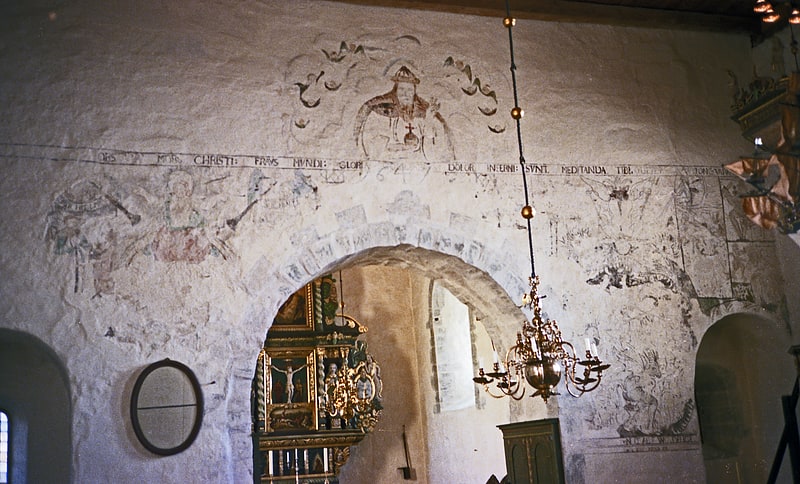
Also known as: Byneset kirke
Parish church in Norway. Byneset Church is a medieval parish church of the Church of Norway in Trondheim Municipality in Trøndelag county, Norway. It is located in the Byneset area of the city of Trondheim. It is one of the churches for the Byneset og Leinstrand parish which is part of the Heimdal og Byåsen prosti in the Diocese of Nidaros. The white, plastered stone church was built in a long church design during the 12th century using plans drawn up by an unknown architect. The church seats about 230 people.[18]
Address: Steinsgrenda 22, Trondheim
Rockheim
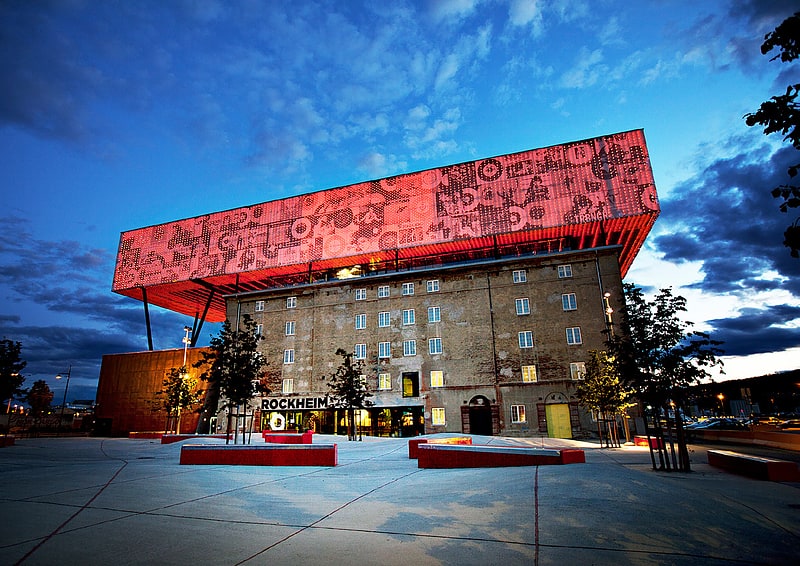
Museum in Trondheim, Norway. Rockheim is Norway's national museum for popular music from the 1950s to the present. It is a division of Museene i Sør-Trøndelag and is housed in a former grain warehouse in Trondheim. It opened in 2010; since 2013, the director has been Sissel Guttormsen. The museum also has a virtual presence, Virtuelle Rockheim, which launched in 2009, and since 2011 musicians and groups have been chosen for the Rockheim Hall of Fame.[19]
Address: Brattørkaia 14, 7010 Trondheim
Trondheim Kunstmuseum
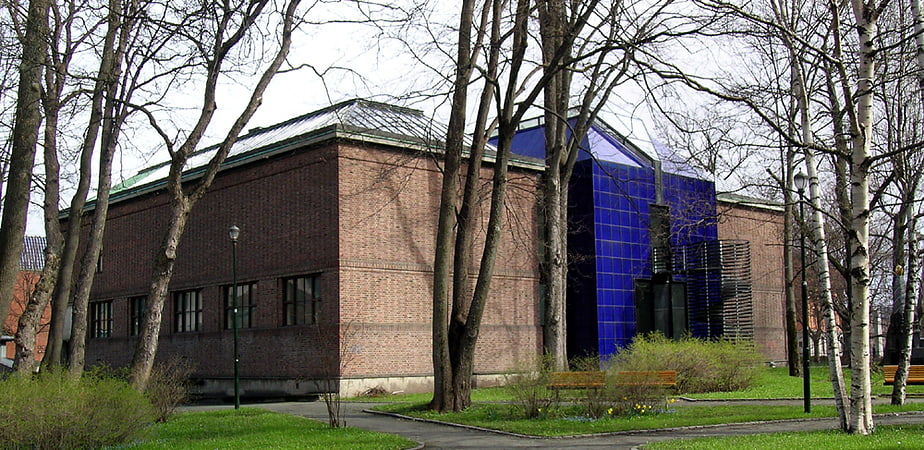
Also known as: Trondheim kunstmuseum
Museum in Trondheim, Norway. The Trondheim Art Museum is an art museum located in Trondheim in Sør-Trøndelag county, Norway. The museum shows temporary exhibitions of international and regional art in dialogue with works from the museum's collection. The museum possesses Norway's third largest public art collection with an emphasis on art since 1850. The permanent collection contains iconic works such as Harald Sohlberg's Natt, Georg Jacobsen's Haren, and Peder Balke's Nordkapp.
The Trondheim Art Museum has two venues, TKM Bispegata (Bispegata 7 b) situated near the Nidaros Cathedral and TKM Gråmølna at Nedre Elvehavn. The main building in Bispegata 7 b was built in 1930 according to plans by architect Peter Daniel Hofflund. The Trondheim Art Museum was established in 1997, as a means to maintain the museum collection. The building has two floors with rooms of varied sizes and light. The building was refurbished in 2012, when artificial lights were installed to provide more stable temperature and lighting. Much of the interior was restored to its original state from 1930.[20]
Address: Bispegata 7b, 7013 Trondheim
St. Olav's Cathedral
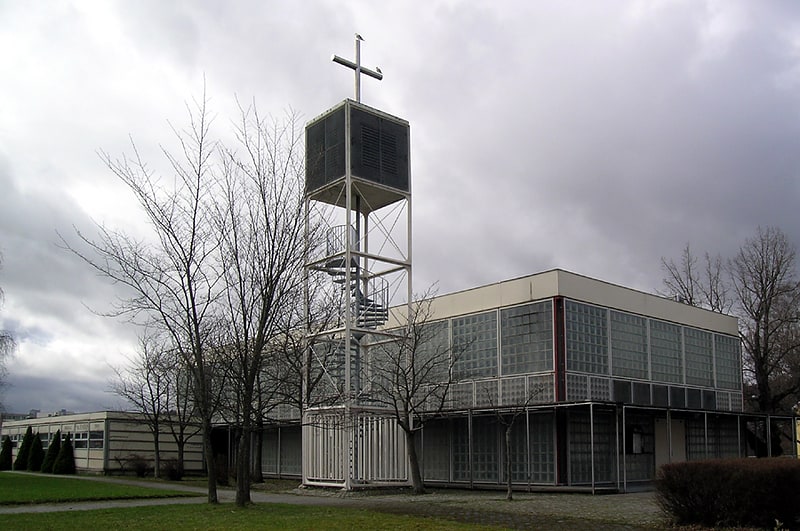
Also known as: St. Olav domkirke
Cathedral in Trondheim, Norway. The St. Olav's Cathedral is the church home to the Prelature of Trondheim, belonging to the Catholic Church in Norway.
It is built on the foundations of a cathedral designed by architect Per Kartvedt and was consecrated in 1973 to serve as the new church of the Vicariate of Trondheim.
In 1979 it was elevated from Rome to the status of cathedral, while the vicarage was converted into a prelature.
Bishop Bernt Ivar Eidsvig initiated a committee to plan a new cathedral in 2009 and the year after the architectural firm Eggen Arkitekter AS got the assignment. The previous church was demolished on 25 May 2014. The new church was finished in November 2016.[21]
Address: Schirmers gate 1, 7012 Trondheim
Haltdalen Stave Church
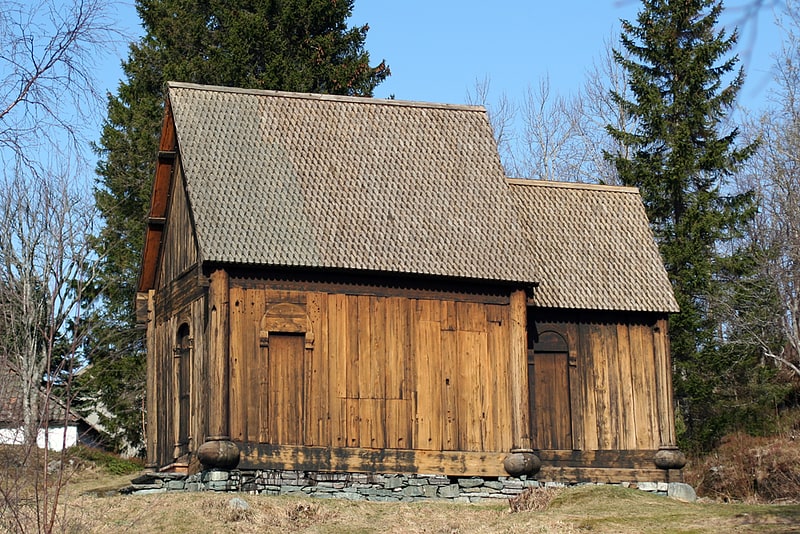
Also known as: Haltdalen stavkirke
Haltdalen Stave Church is a stave church that was originally built in the 1170s in the village of Haltdalen in what is now the municipality of Holtålen in Trøndelag county, Norway. The church is now on display at the Sverresborg Trøndelag Folkemuseum in the city of Trondheim. This is a single-nave stave church of the east Scandinavian-style, and it is the only one that is preserved.[22]
Tyholttårnet

Tower with observation deck and restaurant. Tyholttårnet is a 126 metre tall radio tower with an observation deck in Trondheim, Norway. With its 124-meter it is currently the tallest building in Norway. Tyholttårnet was built in 1985. The tower features a revolving restaurant, at an altitude of 81 metres, which makes one complete revolution per hour.[23]
Address: Otto Nielsens veg 4, 7052 Trondheim
Ilen Church
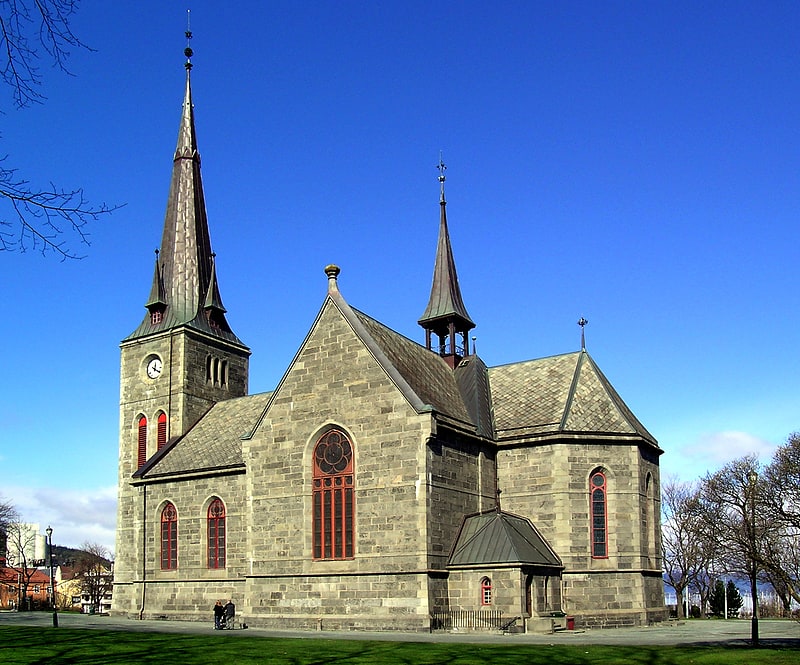
Also known as: Ilen kirke
Church in Trondheim, Norway. Ilen Church is a parish church of the Church of Norway in Trondheim municipality in Trøndelag county, Norway. It is located in the Ila area in the city of Trondheim, on the 250-metre wide isthmus between the river Nid and the Trondheimsfjord. It is the church for the Ilen parish which is part of the Heimdal og Byåsen prosti in the Diocese of Nidaros. The gray, stone church was built in a cruciform style in 1889 by the local building company of Jacob Digre, according to a design by Trondheim based architect Eugene Sissenére. The church seats about 550 people, although it originally fit about 900. The seating was reduced to meet the fire regulations.
A graveyard belonging to the parish is located at Ilsvika in the neighboring district of Ila, a short distance from the church site.[24]
Address: Mellomila 1b, Trondheim
Skansen Bridge
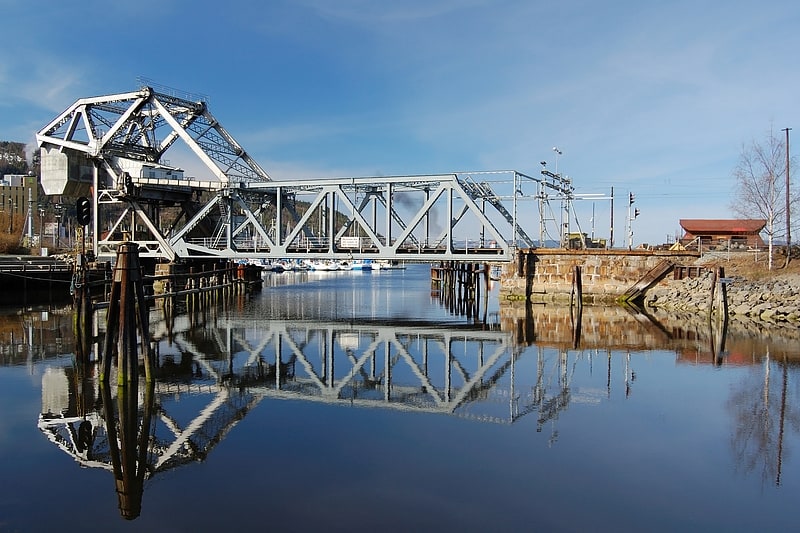
Also known as: Skansenbrua
Bridge in Trondheim, Norway. The Skansen Bridge is a 52-meter span bascule railway bridge located at Skansen in Trondheim, Norway.[25]
Verftsbrua
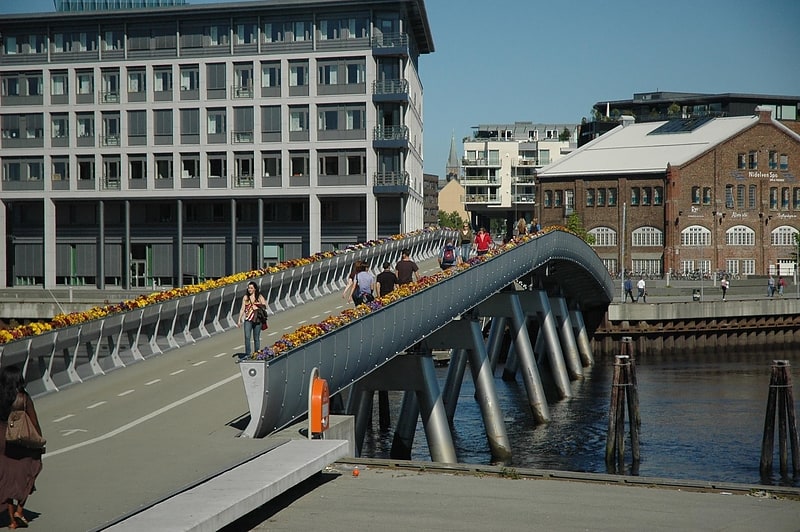
Bridge in Trondheim, Norway. Verftsbrua, also popularly called Blomsterbrua is a bridge at the bay of Trondheim. The bridge, built in 2003, spans 125 metres. The name Verftsbrua comes from the nearby shipyard, Trondhjems mekaniske Værksted, while the name Blomsterbrua is due to the bridge featuring flowerbeds along its edges.
It is mainly used for walking and biking, with over 5,000 people using it every day. It was built so people could reach the centre of the city without taking a long detour. Boats up to a height of 6 metres (20 ft) can pass the bridge, with a channel width of 12.5 metres (41 ft). The bridge is a retractable, and can be opened to allow taller boats to pass.[26]
Trondheim Tramway Museum

Also known as: Sporveismuseet i Trondheim
Museum. Trondheim Tramway Museum is a tram museum located in Trondheim, Norway. The museum offers in addition to a display of the tramway history of Trondheim also heritage trips with old trams on the sole remains of the tramway in Trondheim, Gråkallbanen. The museum has many heritage trams on display, several in working condition. The museum society was founded in 1979 and moved to its present location at the tramway depot at Munkvoll Station after the Trondheim Tramway was closed in 1988. The museum was opened in 1995, but is only open in the summer.[27]
NTNU University Museum
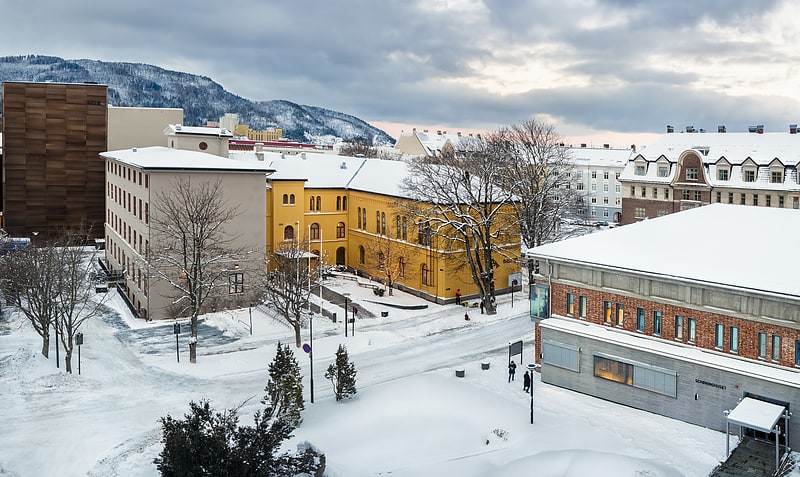
Also known as: Vitenskapsmuseet
Museum in Trondheim, Norway. The NTNU University Museum in Trondheim is one of seven Norwegian university museums with natural and cultural history collections and exhibits. The museum has research and administrative responsibility over archaeology and biology in Central Norway. Additionally, the museum operates comprehensive community outreach programs and has exhibits in wooden buildings in Kalvskinnet.
The Ringve Botantical Garden in Lade as well as Kongsvoll Alpine Garden in Dovre are also under the jurisdiction of the NTNU University Museum.
The museum has its roots in the Royal Norwegian Society of Sciences and Letters (Norwegian: Det Kongelige Norske Videnskabers Selskab, DKNVS, formerly "The Trondheim Society", Norwegian: Det Trondheimske Selskab) since 1760. Since 1968, the museum was closely affiliated with the University in Trondheim, then with NTNU since 1996.
In addition to managing archives and producing exhibits, the museum participates in larger research projects and cooperates with other university museums in digitizing collected works and building databases.
Norway's Museum Union (Norwegian: Norges museumsforbund) named the NTNU University Museum "Norway's Museum of the Year" in 2010.
Reidar Andersen has been the museum director since August 1, 2013.[28]
Address: Erling Skakkes gate 47A, 7012 Trondheim
Trondhjems Kunstforening
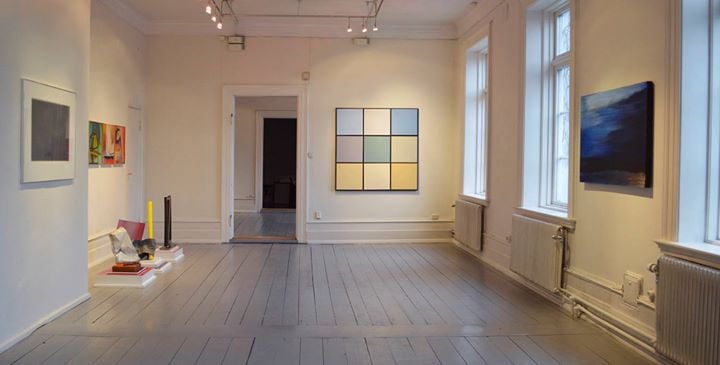
Museum in Trondheim, Norway. Trondhjems Kunstforening is an art society in Trondheim, Norway.
It was founded in 1845 on the initiative of Lars Hansen and I. C. Dahl, to promote and display art in Trondhjem. The first exhibition was held in Stiftsgården in 1846. In 1930 the organisation erected its own localities in Bispegata, designed by Peter Daniel Hofflund. In 1996 it was behind the founding of the museum Trondheim Kunstmuseum.[29]
Address: Bispegata 9 a, 7013 Trondheim
Norsk Døvemuseum
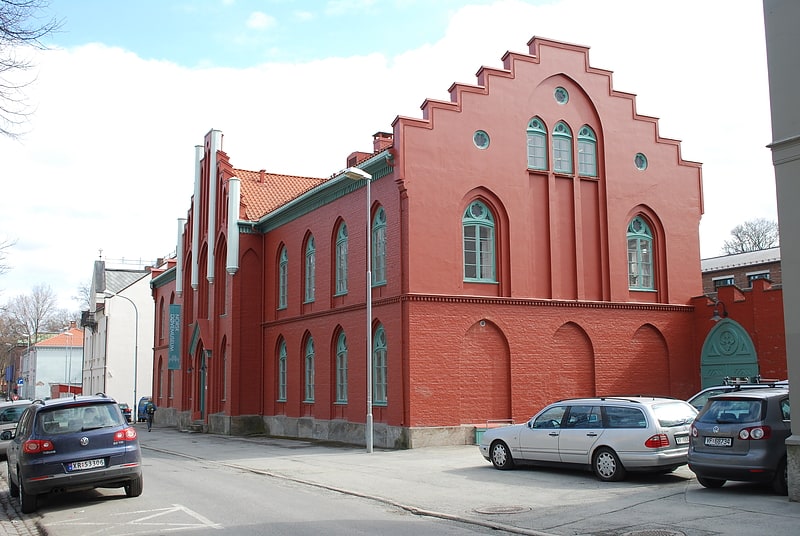
Museum in Trondheim, Norway. Norsk Døvemuseum is a museum in Trondheim, Norway. It is a department of Trøndelag Folkemuseum. The museum is located in Rødbygget, which was drawn by Chr. H. Grosch.It was the first neo-gothic building in Trondheim, built in 1855. The museum was established in 1992, and rebuilt in 2009. Today the upper floors hold offices, and a café is found on the first floor.[30]
Address: Bispegata 9B, 7012 Trondheim
Sverresborg Church

Sverresborg Church is a parish church of the Church of Norway in Trondheim municipality in Trøndelag county, Norway. It is located in the Sverresborg neighborhood in the district of Byåsen in the city of Trondheim. It is one of the churches in the Sverresborg parish. The parish is part of the Heimdal og Byåsen prosti in the Diocese of Nidaros. The wood church is clad with fiber cement siding and it was built in a modern, rectangular design in 2014 by the architect Stein Halvorsen.[31]
Trøndelag Teater

Theater in Trondheim, Norway. Trøndelag Teater is a large theater in the city of Trondheim, in Trøndelag county, Norway.
Trøndelag Teater stages large-scale dance and musical performances.[32]
Address: Prinsens gate 18/20, Trondheim
Berg Church

Also known as: Berg kirke
Church in Trondheim, Norway. Berg Church is a parish church of the Church of Norway in Trondheim municipality in Trøndelag county, Norway. It is located in the Berg area in the city of Trondheim. It is the church for the Berg parish which is part of the Strinda prosti in the Diocese of Nidaros. The red, brick church was built in a long church style in 1972 using plans drawn up by the architects Tycho Castberg, Nils Lien, and Sverre Risan. The church seats about 250 people.[33]
Address: Kong Inges gate 49A, 7052 Trondheim
Lademoen Church
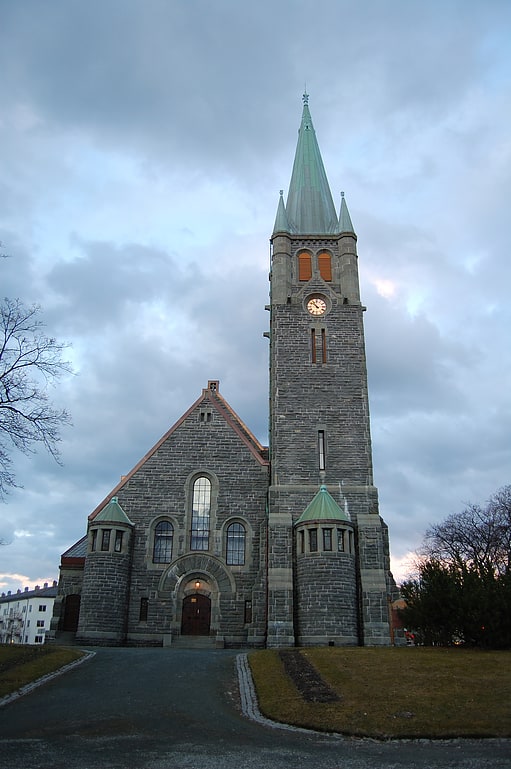
Also known as: Lademoen kirke
Parish church in Trondheim, Norway. Lademoen Church is a parish church of the Church of Norway in Trondheim municipality in Trøndelag county, Norway. It is located in the Lademoen area of the city of Trondheim, immediately north of the old European route E6 highway. It is one of the churches for the Bakklandet og Lademoen parish which is part of the Nidaros domprosti in the Diocese of Nidaros. The stone-and-brick Art Nouveau church was built in a cruciform style in 1905 using plans drawn up by the architect Ole Stein. The church seats about 500 people, making it the second-largest church in Trondheim.[34]
Address: Innherredsveien 78, 7042 Trondheim
Trampe
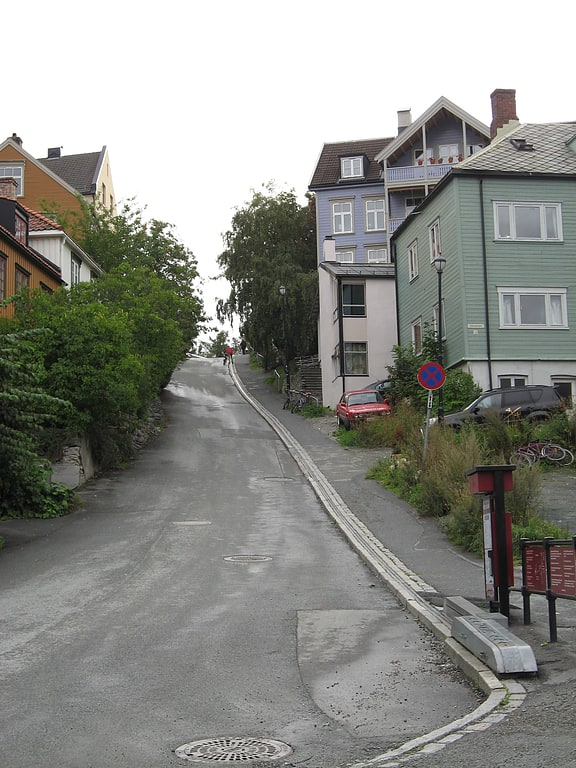
The Trampe bicycle lift is a bicycle lift in Trondheim, Norway, invented and installed in 1993 by Jarle Wanwik.
In 2013 it was upgraded and rebranded under the name Cyclocable by Skirail, part of the Poma group.[35]